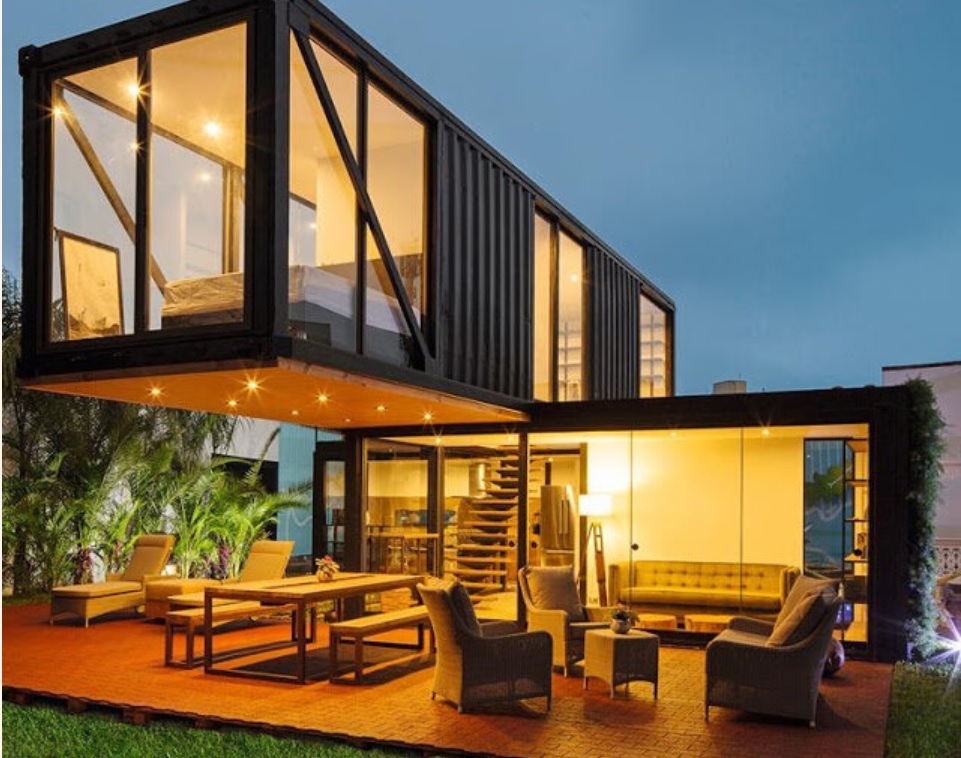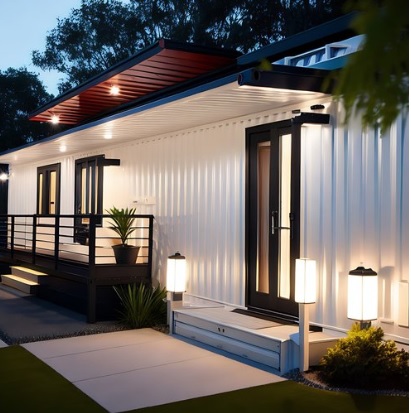
Table of Contents
Preface |
The world of architecture and home construction has witnessed a surge in innovative and sustainable building practices in recent years.
One such trend is the construction of shipping container homes. These homes, made from repurposed shipping containers, offer a unique blend of affordability, durability, and eco-friendliness.
In this article, you will read about the process of building a shipping container home, exploring the key steps involved, and highlight the benefits of this alternative housing solution.
DIYing the shipping container home can cost in the range of $3000 to $10,000, excluding utilities like electricity and plumbing.
Do Some Research and Planning
Before embarking on the construction of a shipping container home, thorough research and careful planning are essential. Start by understanding local building codes and regulations to ensure compliance throughout the process.
Consider the size, layout, and number of containers needed for your home. Create a detailed floor plan, taking into account aspects such as insulation, plumbing, electrical systems, and ventilation.
Seek the assistance of an architect or designer experienced in container home construction to help translate your vision into a feasible plan.

Prepare the Site
Prepare the site where you intend to place your shipping container. Clear the land and level the area, ensuring a stable foundation.
Depending on your location and local regulations, choose an appropriate foundation option, such as a traditional concrete foundation, piers, or a slab.
Make a strong foundation to support the weight of the containers and provide stability against external forces.
Sourcing Containers
Sourcing suitable shipping containers to build your shipping container home is a crucial step in building a container home.
Look for containers that are in good condition, structurally sound, and suitable for your project. Consider factors such as size, quality, and cost when acquiring the containers. Inspect them in person to ensure they meet your requirements.
Select those containers with minimal damage, sturdy floors, and secure locking mechanisms. If possible, choose containers that have had minimal exposure to hazardous materials to ensure a healthy living environment.
Design and Modification
Collaborate with an architect or structural engineer to create a catchy design for your shipping container home that balances your desired aesthetics with structural integrity.
Consider the modifications necessary to convert the containers into livable spaces. These modifications may include cutting openings for doors and windows, reinforcing the structure, and incorporating insulation.
The design should also account for the efficient use of space and the desired functionality of each room. Ensure that the final design adheres to safety standards and local building codes.

Build The Foundation and Structural Work
Install the foundation according to the chosen method, ensuring it meets local building codes and regulations. Prepare the containers for placement by removing any hazardous materials and applying rust-resistant coatings.
Once the foundation is ready, carefully position the containers onto it using cranes or forklifts. Weld the containers together and reinforce the joints to ensure stability and structural integrity. The strength of the connection points is crucial to withstand transportation and environmental forces.
Cut Openings and Install Doors/Windows
Measure and mark the locations of doors, windows, and other openings in the containers. Use appropriate tools to cut through the steel walls, reinforcing the edges to maintain structural integrity.
Install doors, windows, and any necessary framing to ensure proper fit and weatherproofing. These openings not only provide natural light and ventilation but also contribute to the overall aesthetics of the container home.

Plumbing, Electrical, and Insulation
Install the plumbing and electrical systems, including water supply, drainage, electrical wiring, outlets, and fixtures. Collaborate with professionals to ensure safety and compliance with building codes. Insulate the container walls and ceiling to regulate temperature and minimize condensation.
Conclusion
Such a project would definitely require personal involvement. Should you choose not to get involved, there are shipping container companies that would prefabricate the whole house and mount it on the foundation. They also offer turnkey solutions for your shipping container.
Depending on the size and nature of the build, the construction of the shipping container home only takes half or one-third of the time compared to the conventional style of building a home.
The Shipping container alone can cost as little as $3000. The option of expansion of the home remains with you all the time, and the option of mobility of the whole house is phenomenal. The house thus created is sturdy and modular.
FAQs
What is a shipping container home?
A shipping container home is a dwelling made by converting shipping containers into livable spaces.
Are shipping container homes legal?
Yes, shipping container homes are legal in many areas, but it depends on local zoning and building regulations.
How much does a shipping container home cost?
The cost of a ready shipping container home can vary widely, ranging from around $20,000 to $200,000 or more, depending on factors like size, customization, and location.
Are shipping container homes energy-efficient?
Yes, shipping container homes can be energy-efficient when properly insulated and designed with energy-saving features.
Can I customize a shipping container home?
Absolutely! Shipping container homes offer great flexibility for customization, allowing you to create a unique living space according to your needs and preferences.
How long does it take to build a shipping container home?
The construction time for a shipping container home can vary depending on the complexity of the design and the availability of resources, but it typically ranges from a few weeks to several months. Normally, it takes half or one-third of the time compared to the conventional style of building a home.
Can I stack shipping containers to create multiple levels?
Yes, shipping containers can be stacked to create multiple levels, allowing for more living space without compromising structural integrity.
Are shipping container homes safe?
With proper construction and reinforcement, shipping container homes can be safe and durable, meeting or exceeding building code requirements.
Can I get a mortgage or insurance for a shipping container home?
Obtaining a mortgage or insurance for a shipping container home may be more challenging compared to traditional houses, but there are lenders and insurers specializing in this type of construction.
Can I move my shipping container home?
While shipping container homes are designed for transport, once they are permanently installed and connected to utilities, moving them becomes more difficult and expensive.

Excellent idea and beautifully explained.